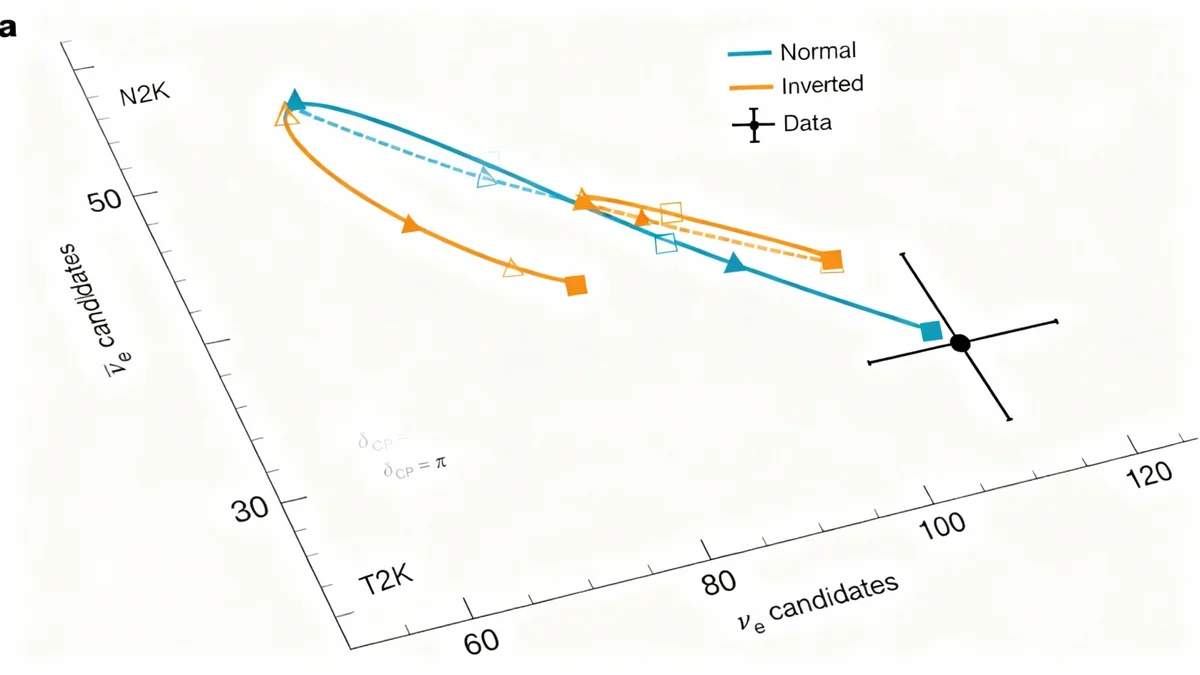An international team of astronomers has identified a massive, invisible object in the distant universe with a mass one million times that of the Sun. The object, which emits no light, was detected using a global network of radio telescopes that observed a subtle distortion in spacetime caused by its immense gravity.
This discovery, detailed in two scientific papers, represents the lowest-mass dark object ever found using the gravitational lensing technique. The finding provides a new avenue for studying dark matter, the enigmatic substance believed to make up approximately 25% of the universe.
Key Takeaways
- Astronomers detected a dark object with a mass equivalent to one million suns.
- The object was identified through gravitational lensing, where its gravity bent the light from a more distant galaxy.
- This is the lowest-mass object ever found using this specific detection method, pushing the boundaries of astronomical observation.
- The discovery offers crucial data that could support or challenge leading theories about the nature of dark matter.
- A worldwide network of radio telescopes, acting as a single Earth-sized instrument, was required for the observation.
A Landmark Discovery in the Search for Dark Matter
Scientists have made a significant breakthrough in their quest to understand the universe's hidden components. They have successfully identified a celestial object that is completely dark, meaning it does not emit any detectable light or radiation. Its presence was only revealed by its powerful gravitational pull on the light from a galaxy located far behind it.
This object has a mass estimated to be one million times greater than our own Sun. The discovery is particularly important because it could be a massive clump of dark matter, a substance that has long been theorized but never directly observed. Finding such objects is a primary goal for cosmologists seeking to map the universe's structure.
Chris Fassnacht, a professor of physics and astronomy at the University of California, Davis, and a co-author on one of the studies, highlighted the importance of the find.
“It’s an impressive achievement to detect such a low mass object at such a large distance from us,” Fassnacht stated. “Finding low-mass objects such as this one is critical for learning about the nature of dark matter.”
The Technique of Gravitational Lensing
Since the mysterious object is invisible, astronomers had to rely on an indirect method of detection known as gravitational lensing. This phenomenon, first predicted by Albert Einstein's theory of general relativity, occurs when a massive object in space bends the fabric of spacetime around it.
Light from a distant source, such as a galaxy, follows this curved path as it travels toward Earth. The massive foreground object acts like a cosmic magnifying glass, distorting and amplifying the image of the background source. In this case, a very large galaxy was already lensing an even more distant one, creating a distorted ring of light.
How Lensing Revealed the Object
The newly discovered object was so subtle that it didn't create its own lens. Instead, its gravity caused a tiny, secondary distortion—described as a "pinch"—in the already-lensed image of the background galaxy. Detecting this minute flaw required incredibly high-resolution imaging and sophisticated analysis.
This achievement marks the lowest-mass object ever detected by a factor of 100 using this technique. It demonstrates that astronomers now have the capability to find smaller, isolated concentrations of mass that were previously undetectable, opening a new window into the dark universe.
An Earth-Sized Telescope Network
Observing such a faint gravitational signature was not possible with a single telescope. The research team combined the power of several of the world's most sensitive radio telescopes to achieve the necessary resolution. This technique is called Very Long Baseline Interferometry (VLBI).
The network effectively created a virtual telescope with a diameter nearly the size of Earth. Key instruments involved in this global effort included:
- The Green Bank Telescope (GBT) in West Virginia, USA.
- The Very Long Baseline Array (VLBA), a network of ten telescopes spread across the United States from Hawaii to the Virgin Islands.
- The European VLBI Network (EVN), which links telescopes across Europe, Asia, South Africa, and Puerto Rico.
By synchronizing these facilities, the astronomers could discern extremely fine details in the distant cosmos, allowing them to spot the subtle gravitational pinch caused by the million-solar-mass object.
What Is This Mysterious Object?
While astronomers have confirmed its mass and location, the exact nature of the dark object remains unknown. The team is considering two primary possibilities, each with profound implications for our understanding of cosmology.
A Clump of Dark Matter
One leading hypothesis is that the object is a concentrated clump of dark matter. If true, it would be about 100 times smaller than any dark matter halo previously detected. This would provide strong evidence for the existence of such structures, which are predicted by the prevailing cosmological model.
The Cold Dark Matter Theory
The standard model of cosmology, often called the Lambda Cold Dark Matter (ΛCDM) model, suggests that dark matter is "cold," meaning it moves slowly. This theory predicts that dark matter should form structures, or halos, on all scales, from tiny clumps to the massive halos that surround entire galaxies. Finding small, starless clumps like this one would be a major confirmation of the theory.
An Inactive Dwarf Galaxy
Another possibility is that the object is an extremely compact dwarf galaxy that has very few stars or has ceased forming them. Such galaxies would be incredibly faint and difficult to see directly, making them appear dark. Distinguishing between a dark matter clump and a faint galaxy is the next major challenge for the research team.
Future Research and Implications
The discovery is consistent with predictions from the cold dark matter theory, a foundational concept in modern astrophysics. Devon Powell, the lead author of one of the papers from the Max Planck Institute for Astrophysics, explained the significance.
“Given the sensitivity of our data, we were expecting to find at least one dark object, so our discovery is consistent with the so-called ‘cold dark matter theory’ on which much of our understanding of how galaxies form is based,” Powell said.
The team is now focused on two main goals. First, they are conducting further analysis of the existing data to refine their understanding of the object's properties. Second, they are searching for more of these dark objects in other parts of the sky.
“Having found one, the question now is whether we can find more and whether the numbers will still agree with the models,” Powell added. If astronomers find many more of these objects, it could solidify the cold dark matter theory. If they find fewer than expected, or none at all, it could force scientists to rethink the fundamental nature of dark matter and how galaxies evolve.





